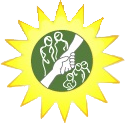Fact sheet for adults
The following are fact sheets provided by the NAMI.org website. They provide need-to-know information on 16 mental health disorders.
For greater understanding of mental health disorders, click on the link of your interest from the following links.
- Autism Spectrum Disorders – Complex developmental disorders of brain function.
- Attention-deficit hyperactivity disorder (ADHD) – Characterized by inattention, hyperactivity and impulsivity.
- Bipolar Disorder or Manic Depression – Causes extreme shifts in mood, energy, and functioning.
- Borderline Personality Disorder (BPD) – Characterized by pervasive instability in moods, interpersonal relationships, self image and behavior.
- Dissociative Disorders – Marked by a dissociation from or interruption of a person’s fundamental aspects of waking consciousness (such as one’s personal identity, one’s personal history, etc.).
- Dual Diagnosis Services – Treatments for people who suffer from co-occurring disorders—mental illness and substance abuse.
- Anorexia Nervosa – Serious, occasionally chronic, and potentially life-threatening eating disorder defined by a refusal to maintain minimal body weight within 15 percent of an individual’s normal weight.
- Bulimia Nervosa – A serious eating disorder marked by a destructive pattern of binge-eating and recurrent inappropriate compensatory behaviors to control one’s weight.
- Binge Eating Disorder (BED) – Eating that is characterized by rapid consumption of a large amount of food by social comparison and experiencing a sense of the eating being out of control.
- Major Depression – Unlike normal emotional experiences of sadness, loss or passing mood states, major depression is persistent and can significantly interfere with an individual’s thoughts, behavior, mood, activity and physical health.
- Obsessive-Compulsive Disorder – Occurs when an individual experiences obsessions and compulsions for more than an hour each day, in a way that interferes with his or her life.
- Panic Attacks – A person who experiences recurrent panic attacks, at least one of which leads to at least a month of increased anxiety or avoidant behavior, is said to have panic disorder.
- Posttraumatic Stress Disorder (PTSD) – An anxiety disorder that can occur after someone experiences a traumatic event that caused intense fear, helplessness, or horror.
- Schizophrenia – Interfering with a person’s ability to think clearly, manage emotions, make decisions and relate to others, schizophrenia impairs a person’s ability to function to their potential.
- Schizoaffective Disorder – Characterized by a combination of symptoms of schizophrenia and an affective (mood) disorder.
- Seasonal Affective Disorder – Characterized by recurrent episodes of depression – usually in late fall and winter – alternating with periods of normal or high mood the rest of the year.
- Tourette’s Disorder or Tourette’s syndrome (TS) – A neurologic syndrome that involves multiple tics that are sudden, rapid, recurrent, non-rhythmic, stereotypical, purposeless movements or vocalizations.
- Community Project Adult Mental Health Resource Guide
Fact sheet for children
Fact sheets provided by Minnesota Association for Infant & Early Childhood Mental Health (MAIECMH), 165 Western Avenue N, Suite 2, St. Paul, MN 55102; www.macmh.org
- Aggressive Behavior
- Eating
- Mental Health and Children
- What You May See When
- Risk Factors
- Gender Identity
- Maternal Depression
- Mental Health Care
- Getting to Know Your Child
- Early Intervention
- Managing Typical Behaviors
- Screening and Services
- Sleep
- Building Partnerships
- Tantrums, Mood Meltdowns
- Medications
- Power Struggles
- Should I Be Concerned?
- Toileting
- COMPLETE SET
Mental Health and Substance Abuse
http://dmh.mo.gov/ada/factsheets.htm
